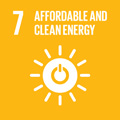- Docente: Raffaello Mazzaro
- Credits: 6
- SSD: FIS/03
- Language: Italian
- Teaching Mode: Traditional lectures
- Campus: Bologna
- Corso: First cycle degree programme (L) in Materials Science (cod. 5940)
-
from Sep 15, 2025 to Dec 02, 2025
Learning outcomes
The course is geared towards understanding nanostructured materials, providing the student with the ability to associate the physicochemical properties of a nanomaterial with its chemical structure and geometric shape. In addition to the main synthesis methods of nanoparticles, their major scientific and technological applications will be addressed.
Course contents
- Physical Foundations of Nanomaterials Concept of the nanoscale: quantum effects and surface-dominated behavior; Quantum confinement and density of states; Review of quantum mechanics applied to low-dimensional systems; Transition from classical condensed matter to nanoscale behavior; Introduction to band theory in solids
- Physical Properties of Nanomaterials Electronic: tunneling effect, Coulomb blockade, quantized conductance; Optical: discrete absorption in quantum dots, surface plasmon resonance; Thermal: reduced conductivity, confined phonons; Magnetic: superparamagnetism, anisotropies in nanosystems; Relationship between dimensionality and properties: 0D (quantum dots), 1D (nanowires, nanotubes), 2D (graphene and related materials).
- Synthesis and Fabrication Techniques: Top-down approaches: electron beam lithography, ion beam, laser ablation; Bottom-up approaches: self-assembly, physical-chemical synthesis (CVD, PVD); Synthesis of specific nanostructures: thin films, heterostructures, 2D materials; Introduction to self-assembling materials and supramolecular chemistry.
- Characterization Techniques for Nanomaterials: Microscopy: SEM, TEM, AFM, STM; Spectroscopy: Raman, UV-VIS, XPS, fluorescence spectroscopy; X-ray diffraction (XRD) and scattering techniques; Electronic and structural analysis at atomic and sub-nanometer resolution
- Physical and Technological Applications of Nanomaterials; Electronics: nanoscale transistors, spintronics, resistive memory materials; Optics: photonics, quantum LEDs, invisibility materials (metamaterials); Energy: materials for solar cells, batteries, supercapacitors; Nanomechanics: sensors, NEMS Introduction to emerging properties in artificial materials (e.g., topological materials, moiré structures).
Readings/Bibliography
T. Tsurumi et al. Nanoscale Physics for Materials Science, CRC Press 2010.
E. Wolf, Nanophysics and Nanotechnology, 2nd edition, Wiley.-VCH
D. Vollath, Nanomaterials: An Introduction to Synthesis, Properties and Applications, Wiley-VCH.
Teaching methods
Lectures with the aid of presentations, available on Virtuale.unibo.it. In-class exercises supported by interactive teaching methods.
Assessment methods
The final exam is designed to evaluate the student’s understanding of the fundamental concepts related to nanomaterials and their physical properties, as well as the ability to apply this knowledge to real cases and analytical techniques.
The exam will be conducted orally and will consist of two main parts:
-
a presentation (on the blackboard, no slides) by the student on a topic of their choice concerning a synthesis, characterization, or application technique related to nanomaterials, selected from a list provided by the instructor;
-
additional questions on the physical principles underlying nanoscale behavior, including quantum effects, surface phenomena, and methods for structural or spectroscopic investigation.
The evaluation will be based on:
-
clarity of exposition and terminological accuracy,
-
mastery of the physical concepts discussed during the course,
-
the ability to reason, connect concepts, and contextualize techniques within real applications,
-
appropriate and effective use of scientific and technical language.
-
Excellent (28–30 cum laude): thorough and in-depth knowledge of nanomaterials physics; clear, precise, and well-structured presentation; rigorous use of scientific language; strong reasoning and synthesis skills.
-
Good – Fair (24–27): generally correct understanding, though partially memorized; mostly organized exposition; appropriate technical language with minor inaccuracies; adequate argumentative ability.
-
Sufficient (18–23): limited but acceptable grasp of key topics; somewhat unclear presentation; partial or imprecise use of technical terminology; weak conceptual connections.
-
Insufficient (<18): fragmented or incorrect knowledge; unclear or disorganized exposition; inappropriate use of technical terms; lack of understanding of core principles and argumentative skills
Teaching tools
Presentations and recorded lectures available on Virtuale.unibo.it.
Interactive teaching tools (Wooclap, Flipped Classroom).
Students with Specific Learning Disabilities (SLD) or temporary/permanent disabilities are advised to contact the University Office responsible in a timely manner (https://site.unibo.it/studenti-con-disabilita-e-dsa/en ). The office will be responsible for proposing any necessary accommodations to the students concerned. These accommodations must be submitted to the instructor for approval at least 15 days in advance, and will be evaluated in light of the learning objectives of the course.
Office hours
See the website of Raffaello Mazzaro
SDGs

This teaching activity contributes to the achievement of the Sustainable Development Goals of the UN 2030 Agenda.
